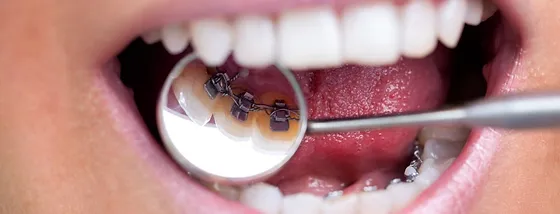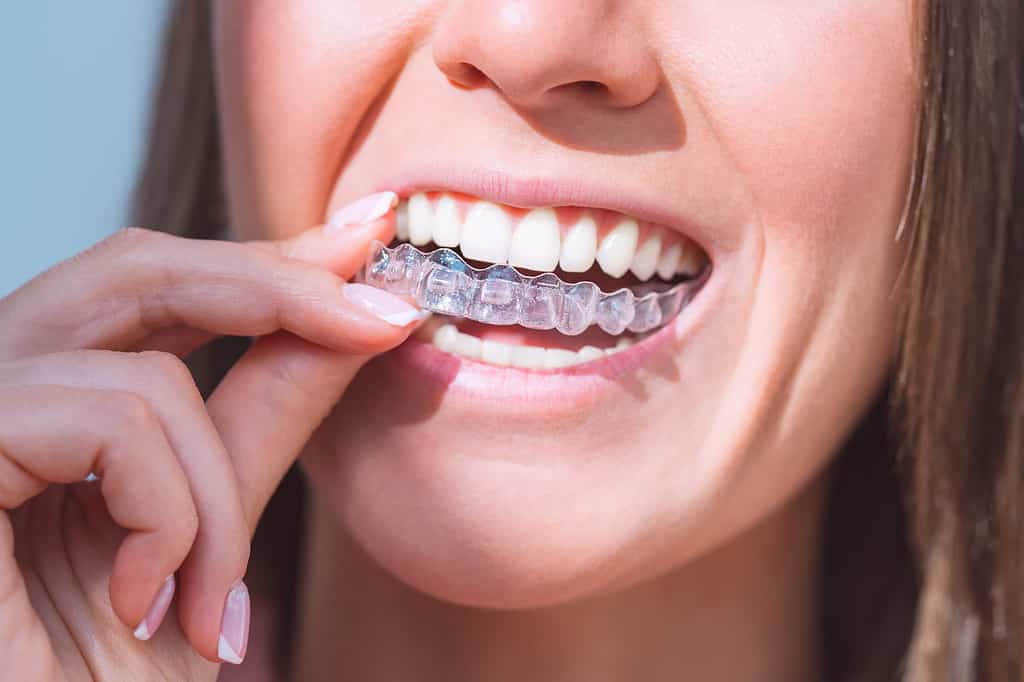Perhaps you have also once wondered in your heart about which to choose for achieving a perfect smile in Liverpool; Invisalign or Lingual braces. Well, we will help you find an answer through this post.
Gone are the days when the only way to achieve straight teeth was with bulky and often uncomfortable metal braces. Thanks to advances in orthodontic technology, there are now alternatives that are just as effective but much less noticeable.
This is particularly good news for adults who want to straighten their teeth but are concerned about the impact of traditional braces on their appearance, both personally and professionally. Invisalign and lingual braces are two of the most popular options for those looking to achieve a straighter smile without the hassle of metal brackets and wires.
But with different features, costs, and maintenance requirements, it can be tough to choose between them. So, let’s explore the differences between Invisalign and lingual braces to help you make an informed decision on which treatment option is best for you.
First, What Are Lingual Braces?
Traditional braces have been around for decades, but in recent years, there has been a growing demand for more discreet options. Lingual braces are one such alternative. Like traditional braces, they use wires, brackets, and sometimes elastic bands to move the teeth.
However, the key difference is that the brackets are attached to the inside of the teeth, facing towards the tongue. This is what gives them their name – “lingual”, meaning “toward the tongue” in dentistry.
One of the biggest advantages of lingual braces is that they are virtually invisible from the outside. Because the brackets are on the back of the teeth, they don’t show unless a person opens their mouth wide.
This makes them a discreet option for anyone who wants to straighten their teeth without drawing attention to their orthodontic treatment.
And What Is Invisalign?
Invisalign is a popular alternative to traditional braces that uses a series of clear plastic trays to gently move teeth into the desired position. Each set of trays is worn for a few weeks before the patient switches to the next set in the series. This process continues until the teeth are properly aligned.
One of the biggest advantages of Invisalign is that the trays are made of clear plastic, making them virtually invisible. However, they may be slightly more noticeable up close compared to lingual braces.
Another advantage of Invisalign is that the trays can be removed, which many users see as a plus. This allows for easy cleaning and makes it possible to enjoy certain foods that would be difficult to eat with traditional braces.
Invisalign or Lingual Braces; Which Is Best For You?
Now that you know what the two treatments are, deciding which is best for your specific case is the next thing. However, there is no one answer to this question. The one you choose will depend on various factors and your personal preference. So, let’s see how the two treatments measure up with each other on different scales.
Invisalign or Lingual Braces; Which Is More Discreet?
When it comes to appearance, both Invisalign and lingual braces are more discreet than traditional braces.
Lingual braces are often the most discreet option of the two. Because they are placed on the tongue side of the teeth, they are typically harder to spot. Patients can smile, talk, and eat without anyone ever seeing their braces. There are no wires or brackets visible from the outside of the teeth.
On the other hand, Invisalign trays are made of clear plastic and are relatively inconspicuous. But up close, they may be detectable. However, the trays can be removed in some cases, such as for photos, interviews, or any other interaction where the patient would rather not have them show.
Which Is More Convenient?
When we talk about comfort and convenience, Invisalign is generally considered more comfortable than lingual braces. While the trays may cause some pressure, it is typically less than the pain caused by brackets and wires. There are no sharp edges poking into the lips and gums, which can be a significant source of discomfort for patients with braces.
Lingual braces, on the other hand, can cause some discomfort to the tongue, which can make talking and eating a challenge. The placement of lingual braces can also restrict tongue movement, making it difficult to swallow, and some patients report developing a lisp.
Brushing and flossing are easier with Invisalign because patients can remove the trays and clean their teeth normally. Braces can make it more challenging to clean teeth, and food can easily get stuck between wires and brackets.
Regarding food, those with lingual braces need to avoid certain types, such as sticky or hard foods, which can bend or break wires and brackets. Invisalign users, however, simply remove their trays before eating and can consume anything they want.
Which Is More Effective?
When it comes to minor teeth misalignment, Invisalign and lingual braces produce similar results. However, braces are typically better in some cases, such as severe crookedness, crowding, and bite issues. For example, overbites and underbites respond better to braces.
However, Lingual braces may not be suitable for severe cases of teeth overcrowding or overlapping. Similarly, if the teeth are unusually shaped or small, fitting brackets on the lingual side may be challenging.
Invisalign often produces faster results than lingual braces, particularly for mild to moderate cases. Visible changes can be seen in a few weeks, while most programs take 12 to 18 months to complete. Braces, on the other hand, usually remain in place for one to three years because the issues they treat are often more complicated.
Nevertheless, choosing the best straightening method depends on individual needs. A dentist will be the best person to decide what will work best for you and which will produce the fastest result based on your particular case.
Invisalign or Lingual Braces; Which is More Expensive?
In terms of cost and availability, Invisalign and traditional braces are usually similar in price. The average cost for both ranges from $3,500 to $8,000.
Lingual braces, on the other hand, are typically more expensive than both Invisalign and traditional braces, with costs ranging from $6,000 to $13,000.
The process of fitting the brackets onto the inside of the teeth is more difficult and time-intensive. This makes them a specialized product. This, in turn, limits their availability and contributes to the higher cost.
Choosing a Teeth Straightening Treatment
Both Invisalign and Lingual braces are great custom-made treatment options to cater to your individual dental needs. Not sure which teeth straightening treatment would be best for you? You can contact us at Pall Mall Dental Clinic for help.
We offer a free initial consultation to help you decide which dental treatment option will be best for you.
So contact us call us now at 0151 258 1968 or use the Contact form to schedule an appointment.



